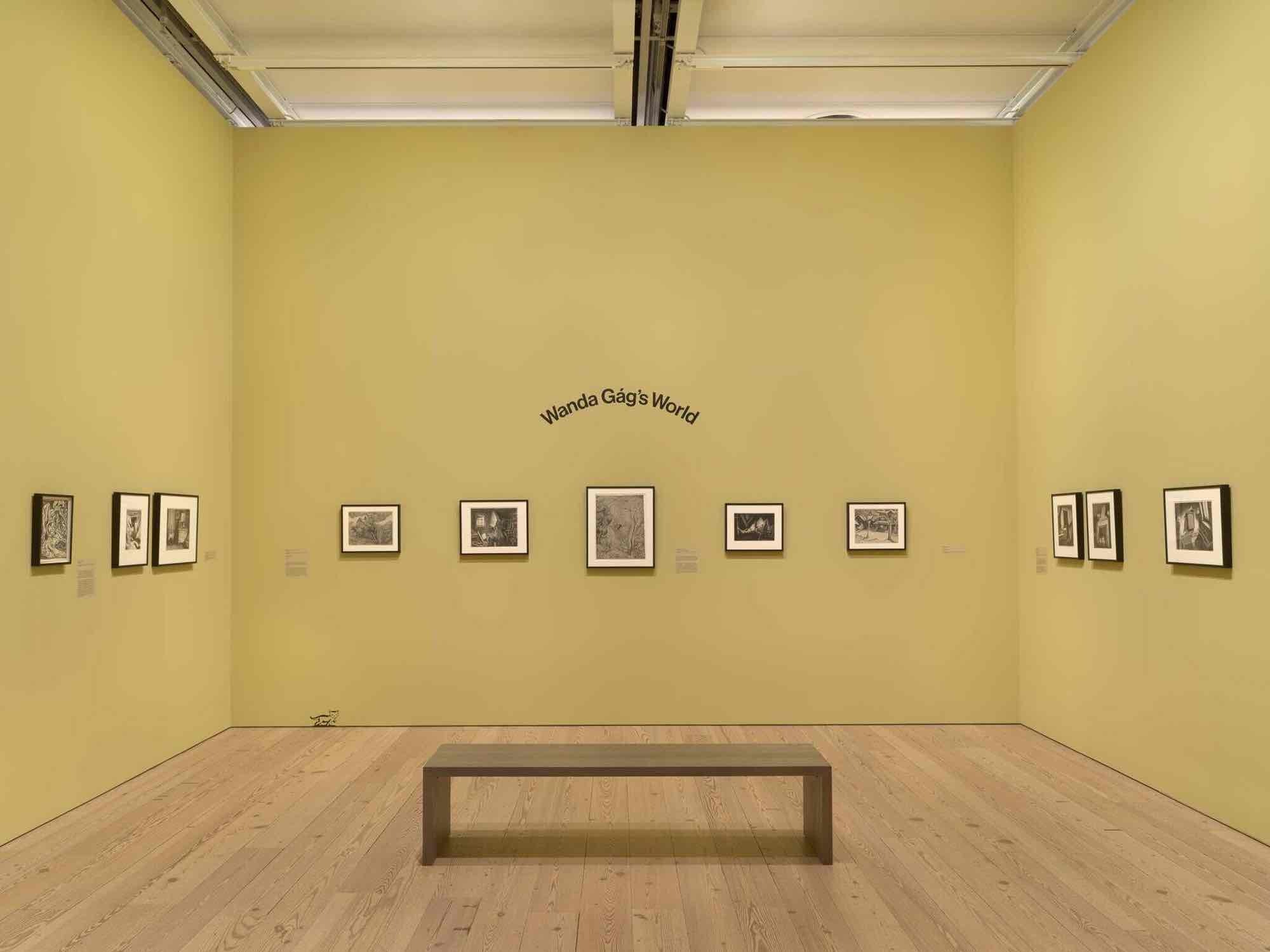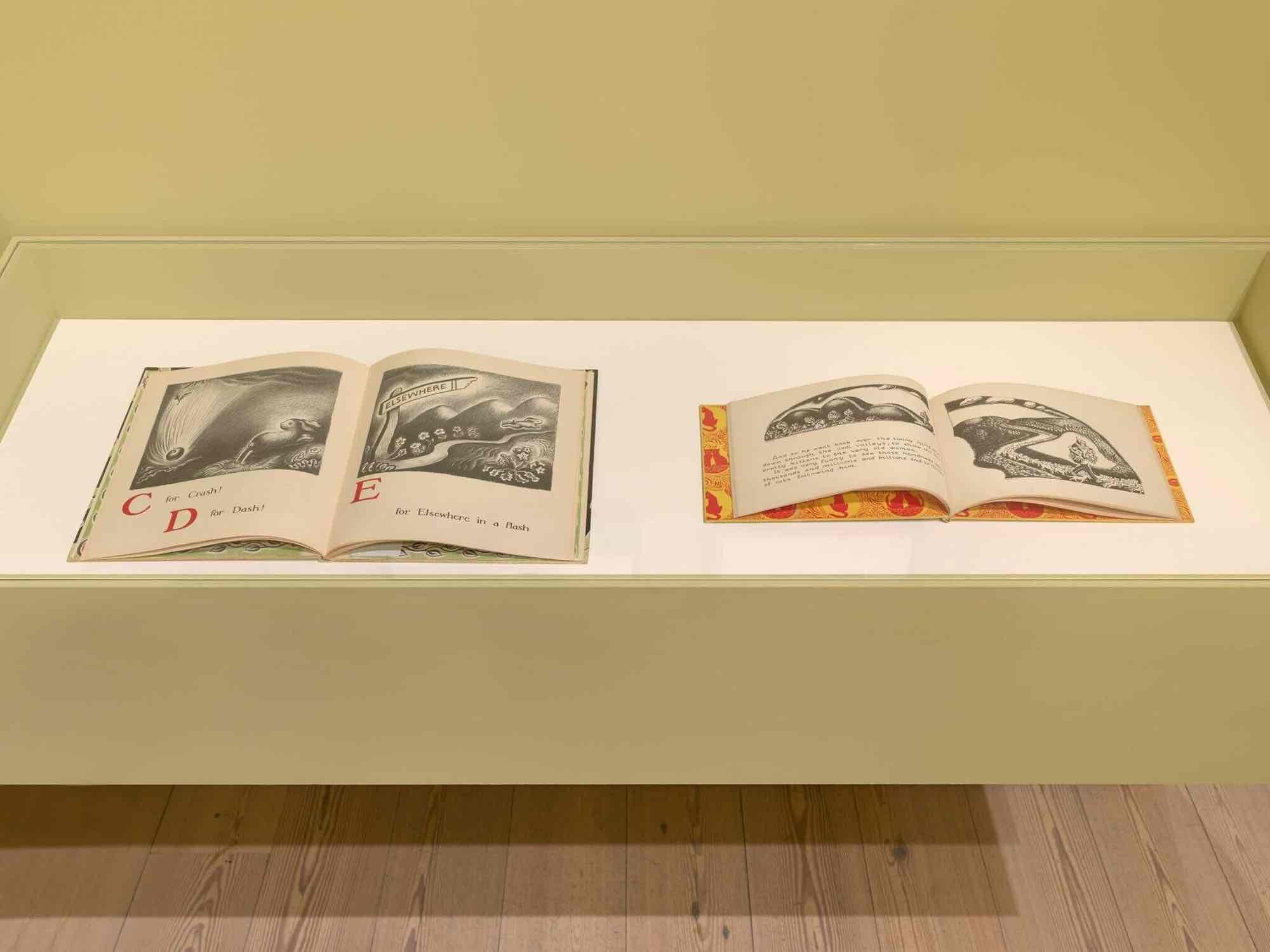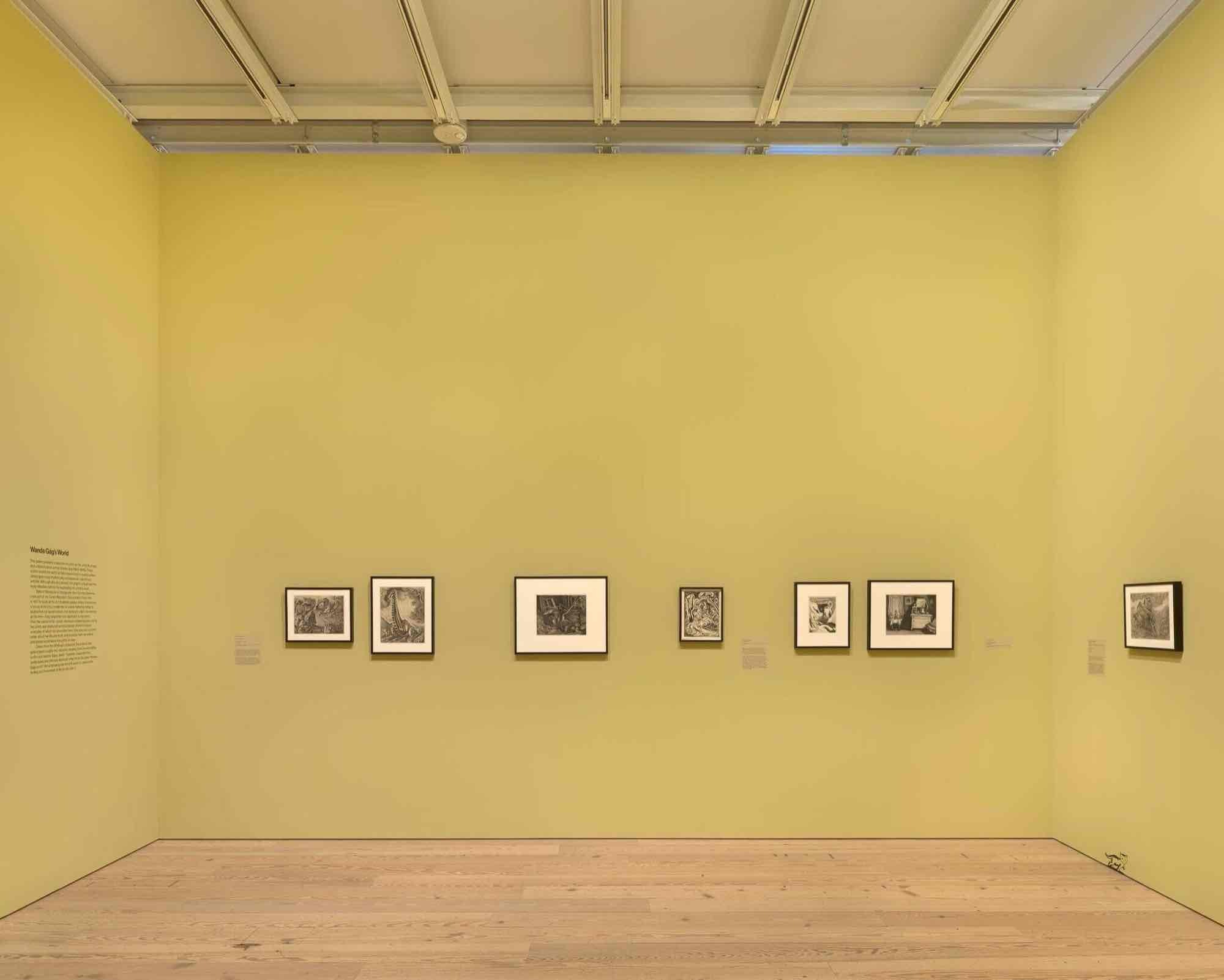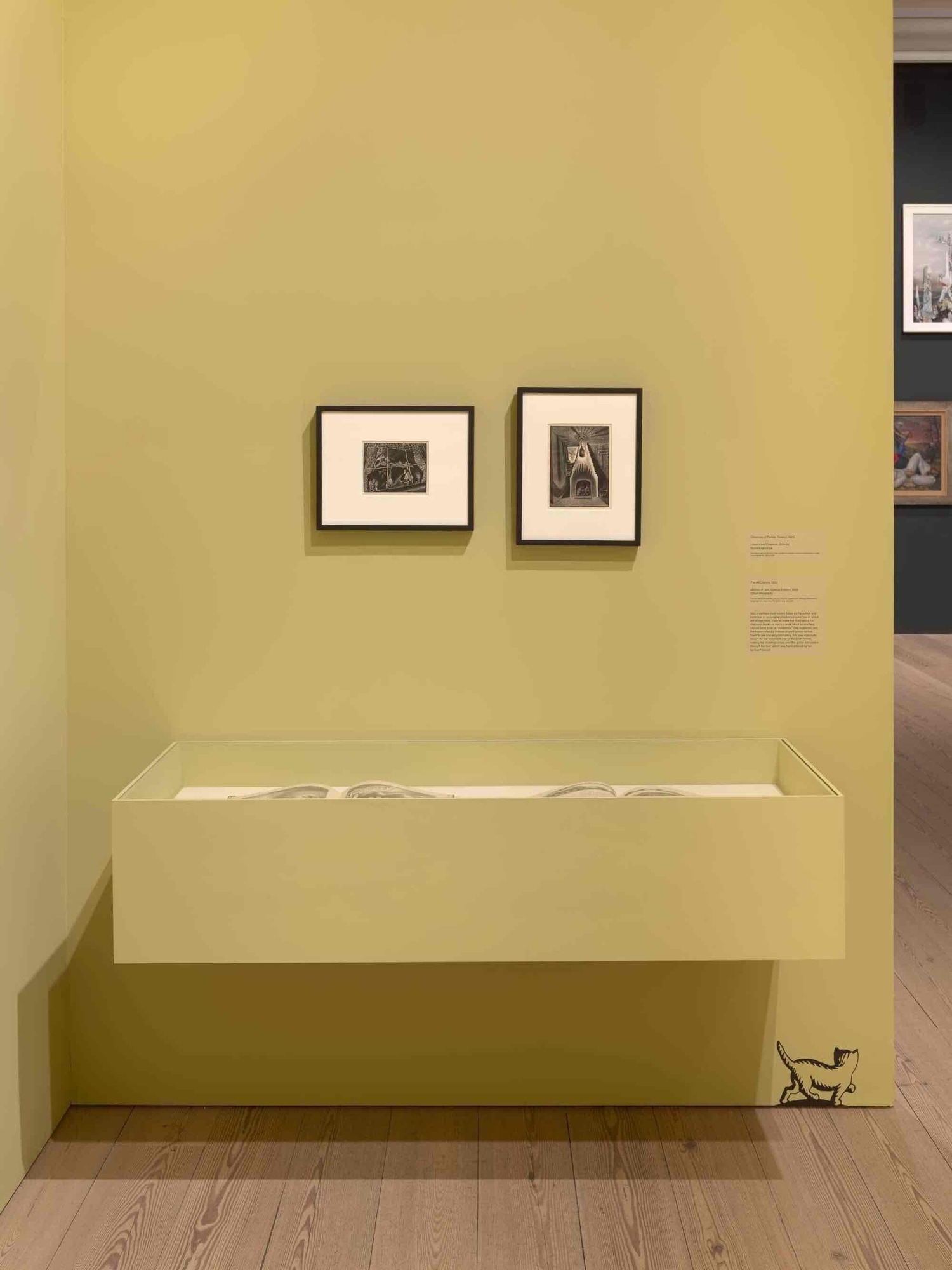Wanda Gág
28 Mar - 01 Dec 2024

Installation view of Wanda Gág’s World (Whitney Museum of American Art, New York, March 28–December, 2024). From left to right: Spring in the Garden, 1927; The Forge, 1932; Upright Landscape, 1926; Evening, 1928; Winter Twilight, 1927. Photograph by Ron Amstutz

Installation view of Wanda Gág’s World (Whitney Museum of American Art, New York, March 28–December, 2024). From left to right: Country Road, 1925; Snow Drifts, 1934; Grandma's Parlor, 1930; Spring in the Garden, 1927; The Forge, 1932; Upright Landscape, 1926; Evening, 1928; Winter Twilight, 1927; Lamplight, 1929; Fireplace, 1930; Macy's Stairway, 1940–4. Photograph by Ron Amstutz

Installation view of Wanda Gág’s World (Whitney Museum of American Art, New York, March 28–December, 2024). From left to right: Millions of Cats (Special Edition), 1928; The ABC Bunny, 1933. Photograph by Ron Amstutz

Installation view of Wanda Gág’s World (Whitney Museum of American Art, New York, March 28–December, 2024). From left to right: Gumbo Lane, 1927; Stone Crusher, 1929; Backyard Corner, 1930; Country Road, 1925; Snow Drifts, 1934; Grandma's Parlor, 1930; Spring in the Garden, 1927. Photograph by Ron Amstutz

Installation view of Wanda Gág’s World (Whitney Museum of American Art, New York, March 28–December, 2024). From left to right: Christmas at Tumble Timbers, 1928; Lantern and Fireplace, 1931–32. Photograph by Ron Amstutz
This exhibition presents a selection of prints by the artist, illustrator, and children’s book author Wanda Gág (1893–1946). These works record the world as Gág experienced it: a place where landscapes move rhythmically and inanimate objects hum with life. Although she also painted, the graphic arts offered her the most effective method for expressing this unique vision.
Born in Minnesota to immigrants from German Bohemia (now part of the Czech Republic), Gág arrived in New York in 1917 to study at the Art Students League, where she became a fixture of the city’s modernist art scene. Adhering neither to abstraction nor social realism—the dominant artistic movements at the time—Gág forged her own approach to figuration. Over the course of her career, she found modest success selling her prints and produced several popular children’s books, examples of which are presented in the show. Gág was also a prolific writer about her life and work, and excerpts from her letters and diaries accompany the prints on view.
Drawn entirely from the Whitney’s collection, the works in this exhibition span roughly two decades, ranging from the mid-1920s to the year before Gág's death. Together, these still lifes, landscapes, and interiors illuminate what the artist called “Wanda Gág world,” demonstrating her fervent quest to capture the feeling and movement of life as she saw it.
Wanda Gág’s World is co-curated by Roxanne Smith, Senior Curatorial Assistant, and Scout Hutchinson, Curatorial Fellow.
Born in Minnesota to immigrants from German Bohemia (now part of the Czech Republic), Gág arrived in New York in 1917 to study at the Art Students League, where she became a fixture of the city’s modernist art scene. Adhering neither to abstraction nor social realism—the dominant artistic movements at the time—Gág forged her own approach to figuration. Over the course of her career, she found modest success selling her prints and produced several popular children’s books, examples of which are presented in the show. Gág was also a prolific writer about her life and work, and excerpts from her letters and diaries accompany the prints on view.
Drawn entirely from the Whitney’s collection, the works in this exhibition span roughly two decades, ranging from the mid-1920s to the year before Gág's death. Together, these still lifes, landscapes, and interiors illuminate what the artist called “Wanda Gág world,” demonstrating her fervent quest to capture the feeling and movement of life as she saw it.
Wanda Gág’s World is co-curated by Roxanne Smith, Senior Curatorial Assistant, and Scout Hutchinson, Curatorial Fellow.
